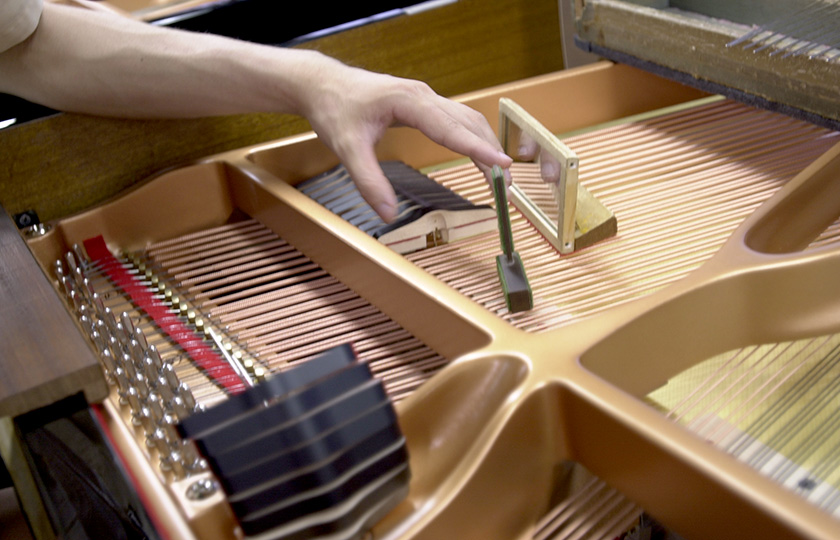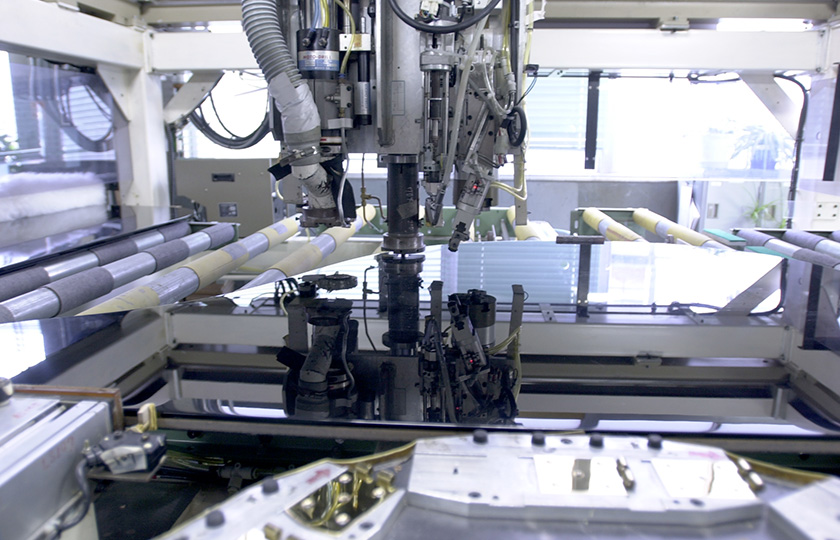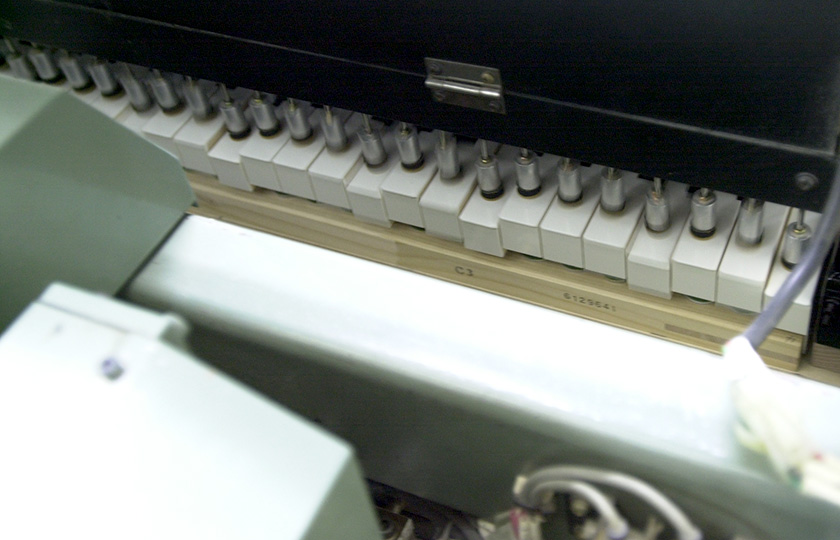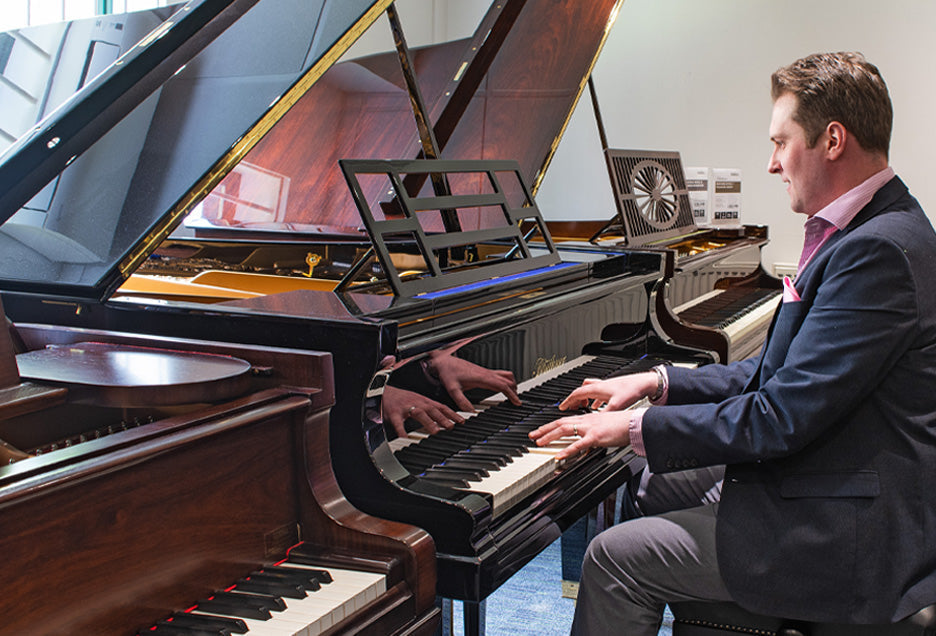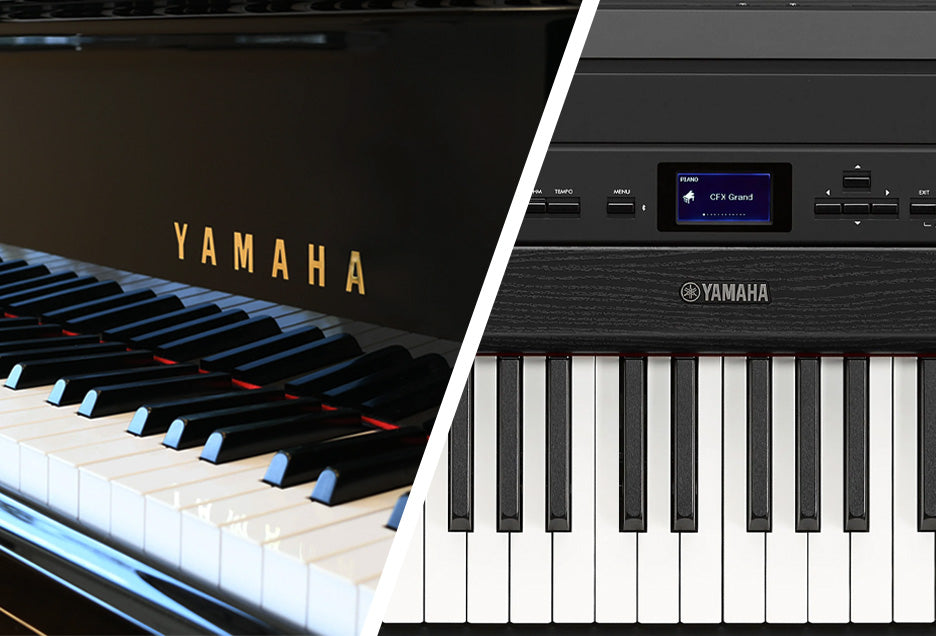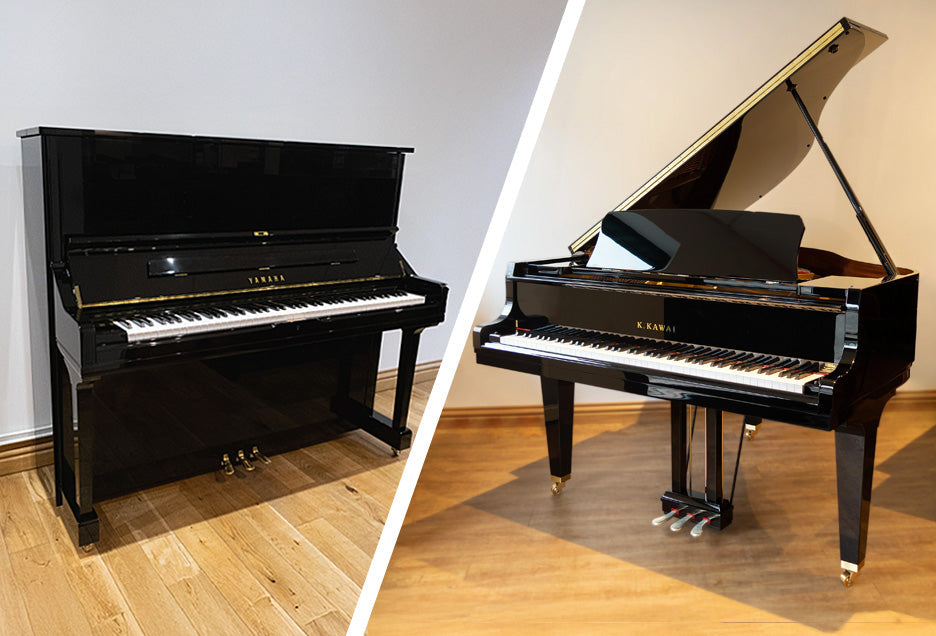Stringing Is Done by Hand, One String at a Time
By this stage of the manufacturing process, the soundboard has been glued in the piano body, which also houses the frame. Approximately 230 steel strings are individually strung in sections, bass, tenor and treble, with a total tension of all strings on the cast iron frame measuring around 20 tons! The strings come in 20 different diameters or gauges including copper wound strings in the bass section. After stringing, the strings are given an initial tuning. Neither the keyboard nor the action have yet been installed, so the strings are plucked using a special tool to avoid tarnishing, and the pitch adjusted accordingly.
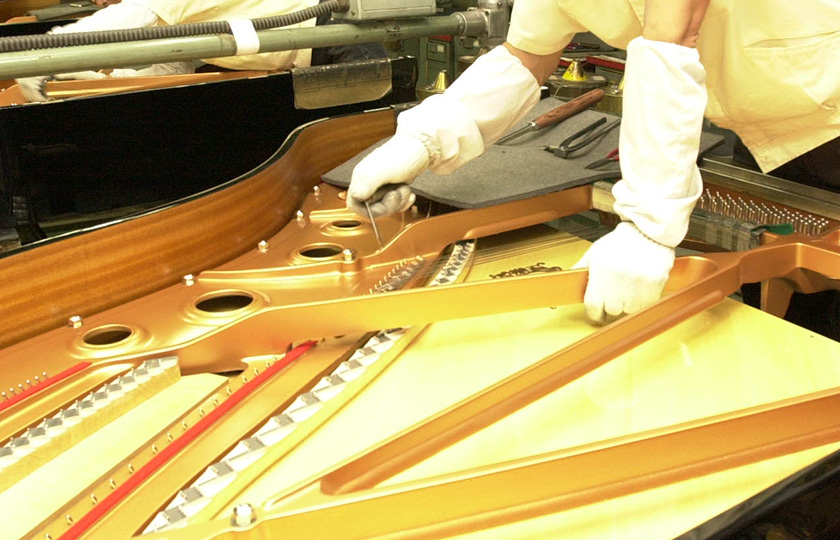
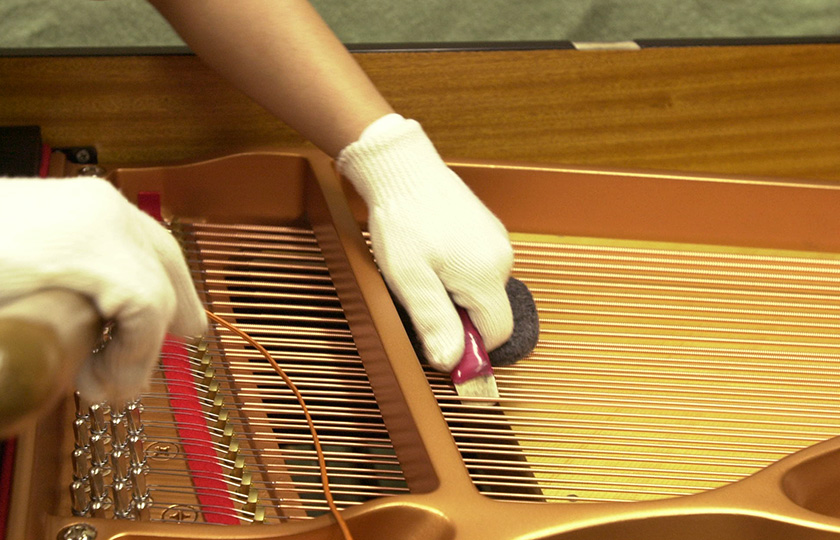
Adjusting the action
The keyboard itself is mounted onto the main body of the piano by sliding it onto the key bed. After its front, back, and lateral position are adjusted to ensure it is perfectly level, the action is mounted on the keyframe. This is the first time that the keyboard and the action have been assembled into a single unit.
After making a series of adjustments the height of the keys is measured using a laser-equipped measuring instrument. The key height is adjusted using thin round paper washers, known as punchings, which come in various thicknesses. A computer calculates the kind and the number of paper shims required to set both the naturals and the sharps at the correct height.
Once the height of the keys has been set, the ‘key drop’ is adjusted. This is measured after the keyboard has been exercised by an automatic key pressing machine, which is designed to test and bed-in the newly assembled action mechanism. Afterwards, a key drop instrument is used to measure the drop as each key is depressed, and it indicates the type and number of paper shims required to make all keys drop to the same height. A computer generates specific instruments on which paper punchings to insert and on which notes, but the process is not complete until a human has played the keyboard to assess how it feels and make further fine adjustments.
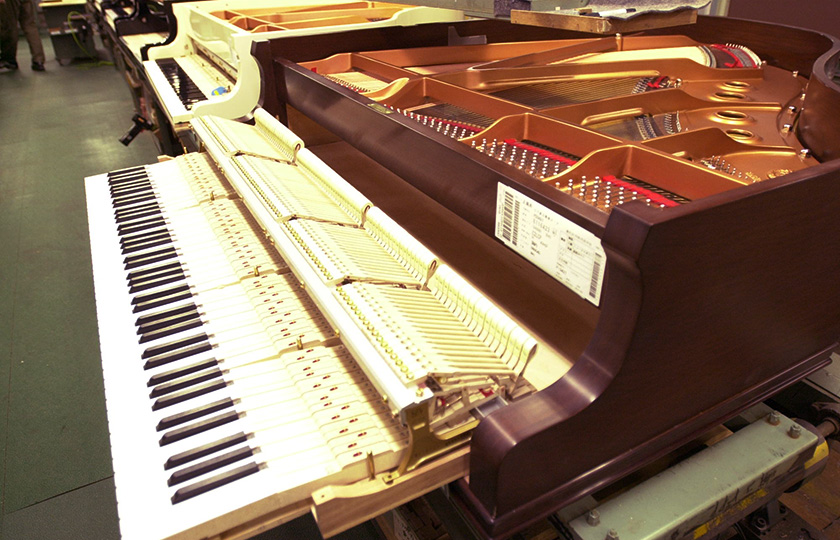
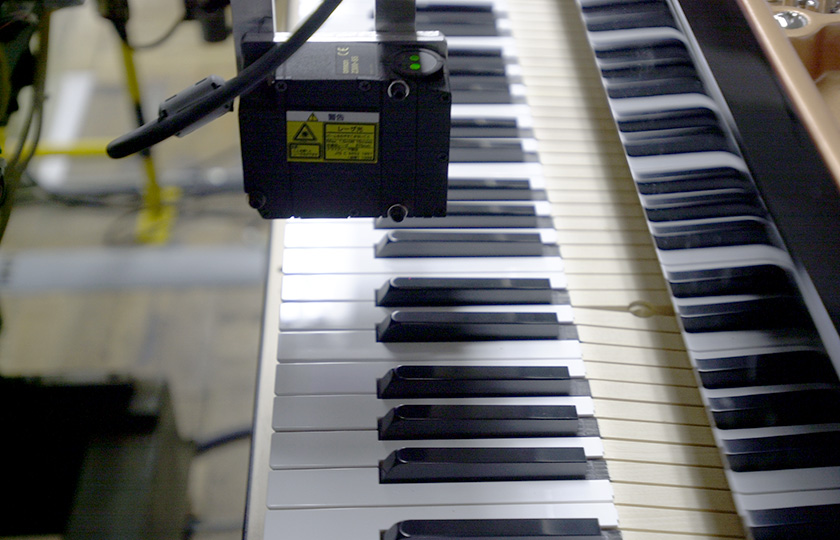
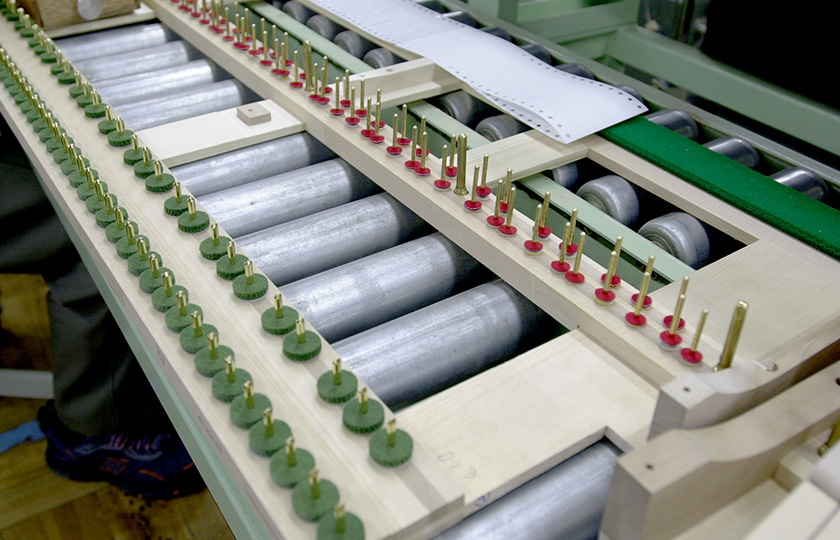
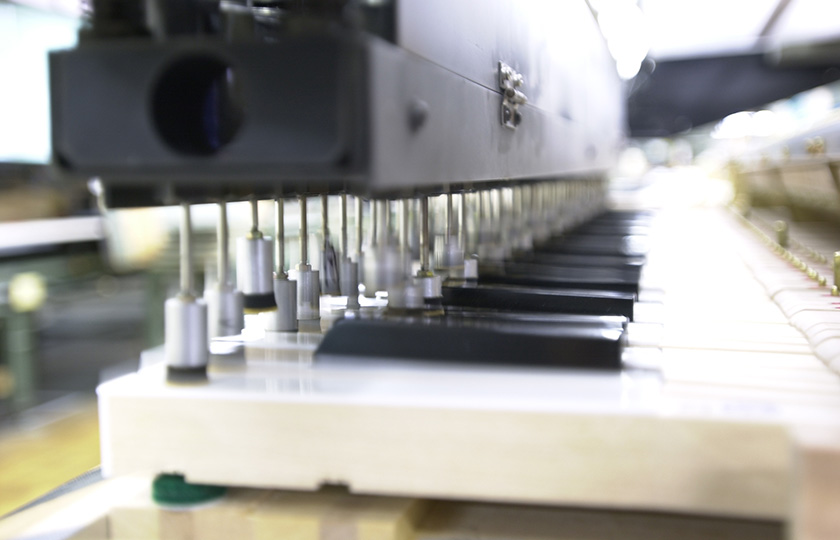

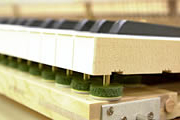
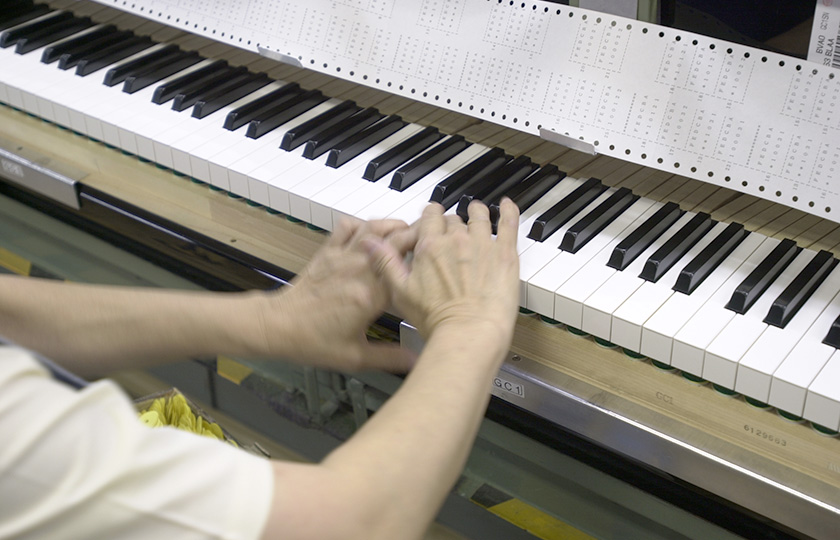
Now the piano is nearly finished…
The dampers now need to be fitted onto the strings and minutely adjusted to ensure they all lift at exactly the correct time during sustain, rise the same distance and then fall uniformly back onto the strings to mute the sound. A mirror is used to ensure that the damper head is in the correct position.
Lastly, the lid assembly is constructed, with the long brass hinge fitted in a special machine to ensure it is perfectly straight. After the lid is installed, the automatic key pressing machine is once again used to give the keyboard and action a thorough play, each note 300 times over 60 minutes to ensure the action is even and to allow for further adjustment to be made as necessary. Before these adjustments are made the piano is placed into a giant flow rack system to season, sitting undisturbed at a specific temperature and humidity which is set according to the climate of where the piano is to be sold.
